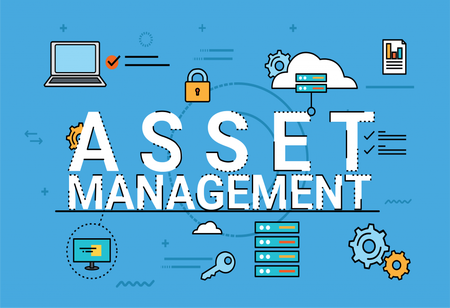How Asset Management Practices Can Boost Your Business
By Sthitaprajnya Panigrahi
 With the ability to monitor and manage the valuable resources of an organization, asset management business strategy plays a key role in boosting the overall productivity of a company. Often ignored or taken into minimal consideration, an asset management system can channelize the overall growth of an organization exponentially. Incorporating an asset management business model can supervise the overall growth of an organization, meanwhile keeping track of funds and finances. As a new age leader, it is not only necessary to focus on the overall gains and profits reaped by the company but also close all the possible doors which can put the business in jeopardy. Hence appears the necessity of an asset management business plan which can estimate, understand, and calculate the life proficiency of assets possessed by the company and predict the possible causes of loss beforehand.
With the ability to monitor and manage the valuable resources of an organization, asset management business strategy plays a key role in boosting the overall productivity of a company. Often ignored or taken into minimal consideration, an asset management system can channelize the overall growth of an organization exponentially. Incorporating an asset management business model can supervise the overall growth of an organization, meanwhile keeping track of funds and finances. As a new age leader, it is not only necessary to focus on the overall gains and profits reaped by the company but also close all the possible doors which can put the business in jeopardy. Hence appears the necessity of an asset management business plan which can estimate, understand, and calculate the life proficiency of assets possessed by the company and predict the possible causes of loss beforehand.
The below-cited points highlight the significance of adopting an efficient asset management business process in the organization.
- Acknowledge the Assets: A company can possess numerous resources and recognizing them as a beneficial source or asset to the organization, is the first step towards drawing out an effective asset management plan. Liquid or fixed, it is better to track down every possible asset possessed by the company and then estimate their value as per the current market. Assembling all the assets in a single document can open doors to the best possible use of them as well as generation of revenue out of them.
- Dedicate a Reliable Team: It is not a trivial matter which can be dragged along with the other existing objectives of the organization. A matter of concern, asset management needs a team of professionals who have the working experience as well as the ability to foresee the future of the market. They will identify the lost stolen or ghost assets possessed by the company and ensure no flow of finance in that direction.
- Asset Management Strategy: What comes next is the plan or strategy to manage the assets. A strategy will help in identifying and managing any kind of approaching risks beforehand. They will include everything necessary for the management of resources, such as the assets which are inadequate to meet the client’s demand, the assets which are not generating much revenue now but posses the probability of generating high revenue in future, the assets which are in immediate need of disposal, and so on.
- Determine The Asset Life Cycle: By analyzing the performance of assets, the life cycle of assets can be predicted in advance. There might be some resources that have exceeded their time limit of generating up-to-the-mark results but are still used by the employees. This can directly impact the efficiency and productivity of the organization. It is better to identify the items which need to be discarded and the new items that need to be purchased.
- Asset Management Solution: A hectic as well as a time-consuming affair, asset management needs a lot of focus and energy when handled manually. To optimize and error-free the asset management process, it is necessary for the organization to go for an automated asset management solution. Software for asset management can calculate and track the resource depletion rate, maintenance value of assets, and financial management of assets along with many other complex resource management tasks.
Adopting an innovative asset management strategy strengthens financial stability as well as envisages the future path of the organization. Checking the upcoming deterioration in the resources beforehand and draw out a strategic approach to prevent the losses can make the company more future-ready.




